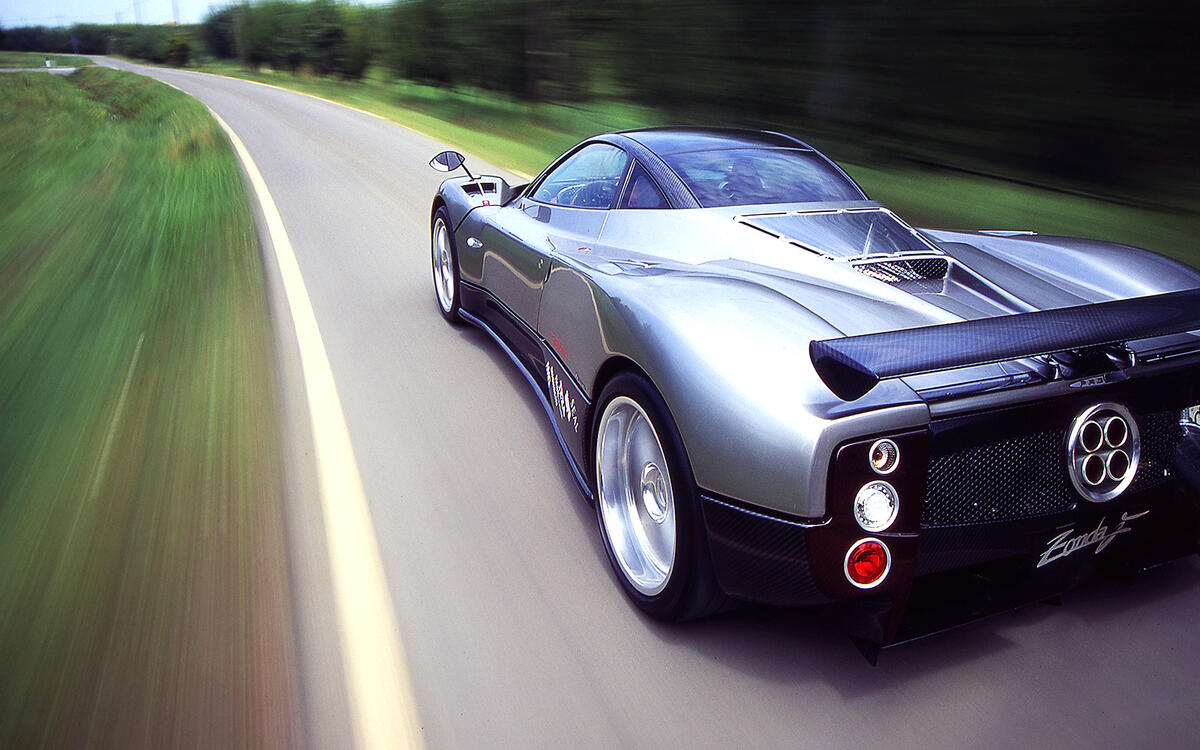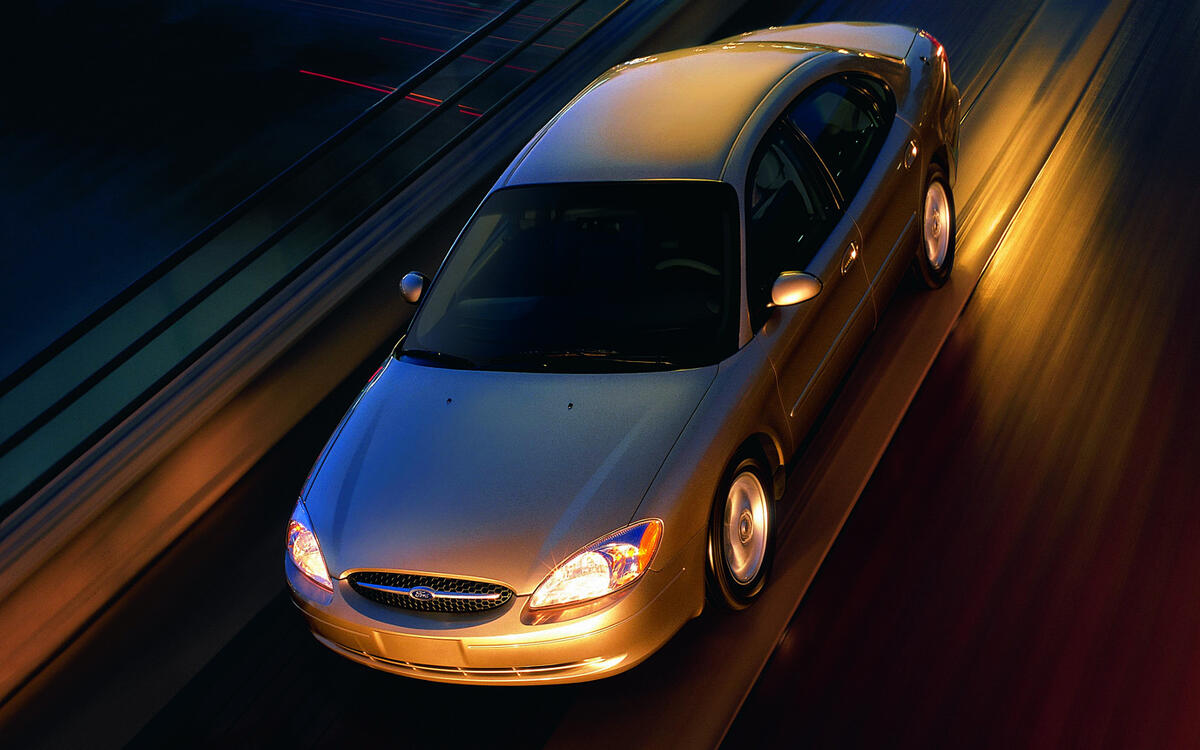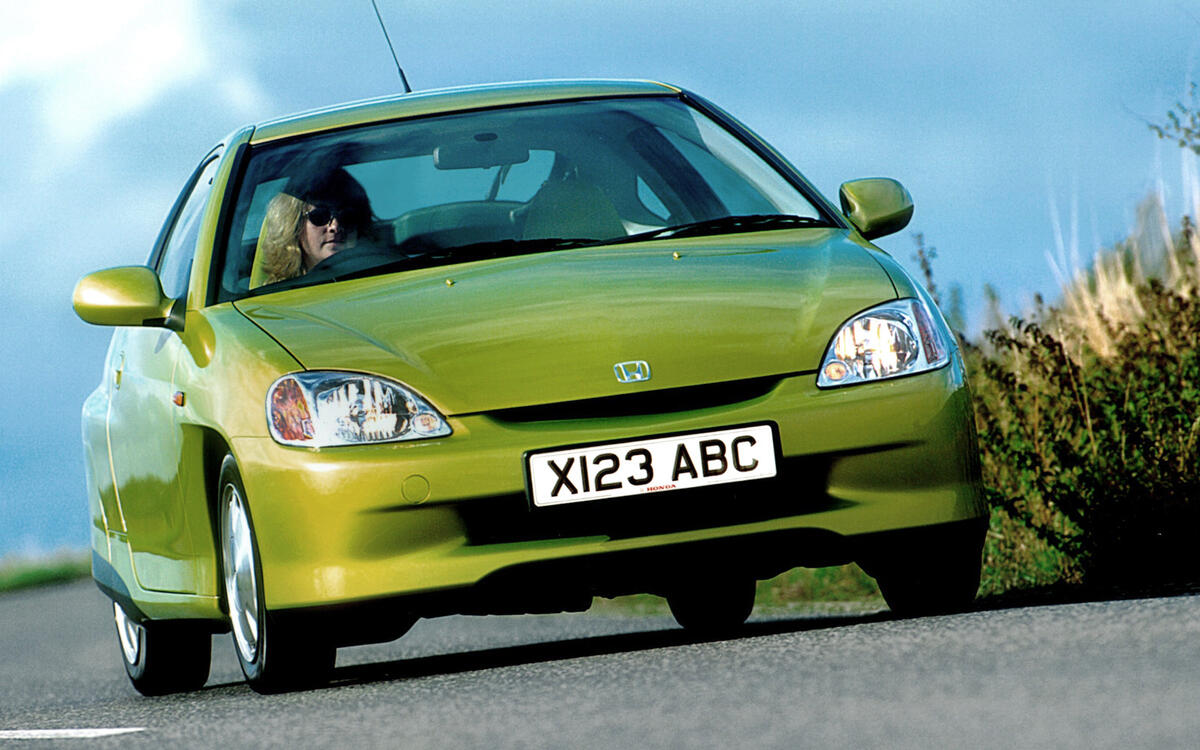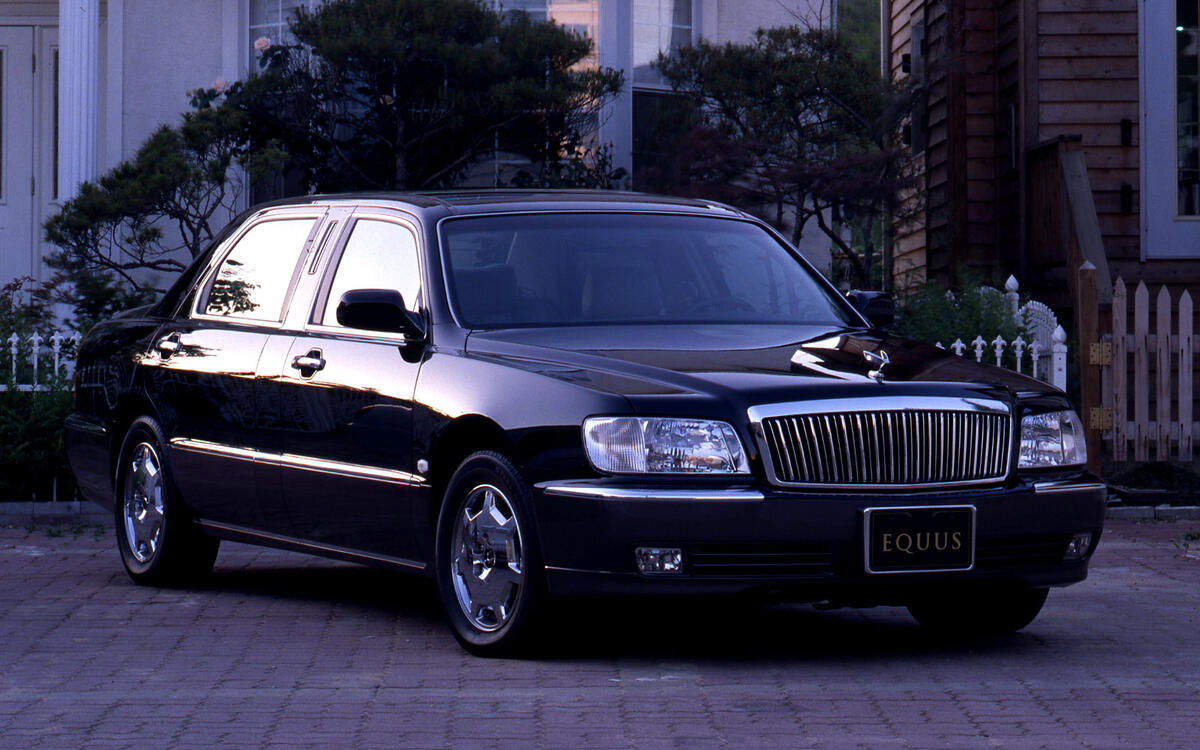 Slide of
Slide of
Twenty years ago, manufacturers were bringing to market what would become their first 21st-century cars.
Since the motor industry was incomparably more mature than it had been in 1899, few of them were as adventurous or radical as the ones being produced back then, but they naturally represented a much wider choice of personal transport, from small hatchbacks to off-roaders and supercars.
All of them were on sale during the lifetimes of most of our readers, yet while some remain famous others are almost forgotten. Looking back at the class of 1999 shows both how little and how much has changed:
 Slide of
Slide of
Audi A2
The aluminium-bodied A2 was an extraordinary attempt to build a modern supermini. With low weight and efficient engines, it was very cheap to run, but since it was also expensive to make and to buy it was far less successful than Audi had hoped. Despite this, some enthusiasts now regard it as a modern classic.
And as we said at the time, “the best thing about the A2 is that it isn’t merely a design exercise. Yes, it’s a great car to look at, sit in and touch, but it’s also a riot to drive.”
 Slide of
Slide of
Audi allroad quattro
Based on the A6 Avant, this was Audi’s first attempt at a semi-off-road estate with an increased ride height, extra body protection and four-wheel drive. Like its rivals, it presented an alternative to the increasingly popular SUVs for people who dismissed them as ‘Chelsea tractors’.
Its adjustable air suspension allowed the driver to increase the ride height as-needed, giving us a versatile car that was much more capable off-road than it looked. In America, the Allroad’s engine options included a twin-turbocharged 2.7-litre V6 shared with the S4 and a 300hp 4.2-liter V8. European buyers could order it with a V6 turbodiesel.
 Slide of
Slide of
BMW X5
Developed when BMW still owned Land Rover, the original X5 was the company’s first SUV. It has been replaced three times, and the current car is part of a seven-model sub-range. Like all the later ones, this X5 was built in BMW’s US factory at Spartanburg in South Carolina. The X5 showed how well an SUV could drive on the road.
The X5 was and is a better handling SUV, it’s as simple as that – and the 2.3 million examples sold to date showed this was a popular recipe.
 Slide of
Slide of
Citroën Xsara Picasso
The decline in popularity of MPVs across Europe means that it wouldn’t sell well now, but in the early years of the 20th century the cheap and practical Xsara Picasso was very popular, especially in the UK. The name was licensed from the family of artist Pablo Picasso, though some members objected strongly.
 Slide of
Slide of
Ferrari 360
Like the very different Audi A2 mentioned previously, the Ferrari 360 was based on an aluminium spaceframe chassis. The successor to the F355, it remained in production for six years until it was replaced by the F430. Ferrari built road and competition versions, most of the latter being used for a one-make race series.
But aside from that, the 360 represented a new chapter in Maranello’s history; unlike Ferraris before it and in particular its immediate predecessor, the F355, it was a perfectly usable and reliable supercar, capable, even, of being a daily driver.
 Slide of
Slide of
Ford Taurus
The 1999 Taurus was mechanically similar to the third-generation version it replaced but had much more conservative styling. A sister car, the Mercury Sable, was launched at around the same time. The Taurus lasted two years longer, until 2007. Its name then disappeared briefly before returning for a completely new model in 2008.
This fourth generation Taurus gave us an early look at its New Edge design language, as penned by Moray Callum, younger brother of famed Jaguar designer Ian Callum.
 Slide of
Slide of
Honda HR-V
Introduced at a time when ten percent of Honda car production was devoted to SUVs, the HR-V was one of the first crossovers, intended more for tarmac use than off-roading. European sales might have been better if Honda had offered a diesel engine. Production ended in 2006, and the next HR-V did not appear until nine years later.
The HR-V was very much a harbinger of things to come for the industry.
 Slide of
Slide of
Honda Insight
Honda’s first Insight was a strange machine with a very aerodynamic body and, in the interests of even better airflow, semi-enclosed rear wheels. It came to market two years after the Toyota Prius, but the Insight went on sale in the United States several months before its hybrid rival.
This innovative car was an early sign that some part of the motor industry were taking environmental responsibilities seriously, a message that has still greater resonance in 2019.
 Slide of
Slide of
Hyundai Equus
Co-developed with Mitsubishi, whose version was known as the Proudia, the Equus was a large, front-wheel drive luxury saloon sold mostly in the Middle and Far East. A version called the Centennial appeared briefly in some European markets. The Equus was replaced after ten years by a more modern rear-wheel drive car of the same name.
The Equus showed the direction of travel for Hyundai and its Kia associate, and while 20 years on neither have cracked the luxury nut, they are both much more credible players today – and the journey started with cars like this.
 Slide of
Slide of
Kia Carens
Talking of which…. launched in the same year as another compact MPV, the Citroen Xsara Picasso, the first-generation Carens was less successful in Europe. However, it appeared at a time when Kia was becoming known for producing reasonably good cars at low prices. It has been replaced twice by increasingly higher-quality versions.
 Slide of
Slide of
Lancia Lybra
A successor to the Dedra, the Lancia Lybra shared a platform with the much better-looking and more successful Alfa Romeo 156 which had made its debut two years earlier. This compact executive model lasted for six years and was not directly replaced. Brimful with technology and powered by zesty engines, the model deserved better.
 Slide of
Slide of
Mazda Premacy
Mazda’s compact MPV was displayed at the Geneva Motor Show in March 1999 and went on sale a month later, in some cases under the name Ford Ixion. It was produced until late 2004 before being replaced. Successors have been sold with the Mazda5 name. Rather late to the MPV party, it was a credible offering.
 Slide of
Slide of
Pagani Zonda
At its debut, the Zonda was fitted with a six-litre Mercedes V12 engine, though capacities have reached as much as 7.3 litres. A bewildering variety of Zondas have been produced over twenty years. They are all named after a wind which blows through Argentina, home country of company founder Horacio Pagani – and all thrill and excite like few other cars.
 Slide of
Slide of
Peugeot 607
The 607 was a large French car, and therefore an object of very little interest to anyone outside France – a pity, because in many respects it was rather good. But this car and the smaller 407 were both replaced by the first-generation Peugeot 508, launched in 2010.
 Slide of
Slide of
Porsche 911 GT3
Porsche has been selling lightweight, track-ready but road-legal versions of the 911 named GT3 for 20 years. The 1999 model was similar to all later ones in that it had a more powerful than standard engine (355bhp in this case) and rear-wheel drive. A one-make race series was held a year before road-car sales began.
GT3 have been among the very most highly-regarded 911 variants ever since, delivering a pure super sports car experience for keen drivers everywhere.
 Slide of
Slide of
Renault Clio 172
This was the third high-performance Clio after the 16v and the Wiliams, and the first to bear Renault Sport branding. Like most of its successors, it had a naturally-aspirated two-litre engine and manual gearbox, a policy Renault maintained until the introduction of the RS 200 EDC in 2012. 172s are popular in amateur motorsport today, and for good reason: they’re a hoot to drive on the limit.
 Slide of
Slide of
Skoda Fabia
An indirect replacement for the Felicia, the Fabia was of vast long-term importance for Skoda. It was the first car from the Czech firm based on a Volkswagen Group platform, which it shared with the VW Polo and SEAT Ibiza. The vRS derivative was unusual in that it was a hot hatch available only with a diesel engine.
 Slide of
Slide of
Toyota Tundra
The first Tundra was manufactured in a factory in Gibson County, Indiana, for North American customers. It was offered with three body styles and an initial choice of 3.4-litre V6 and 4.7-litre V8 engines. Regarded as too small for its intended market, it was replaced by a larger and more powerful Tundra in 2007.
A mis-step it may have been, but Toyota was marking out its claim to join a very important part of the US car market.
 Slide of
Slide of
Toyota Yaris
Also known as the Vitz in Japan or Echo in some other markets, the first-generation Yaris was unusual among superminis in that it had a a digital instrument display in a pod mounted on the centre of the dashboard. The mechanically similar Echo coupe went on sale in the US in 1999. In usable space and packaging, it was a marvel.
 Slide of
Slide of
Toyota Yaris Verso
Extravagantly odd-looking, the Yaris Verso was also beyond question very practical, with an enormous load capacity (over 2000 litres with the rear seats folded) for a car less than 13 feet long. The later and slightly longer Toyota Verso-S, though similar in concept, had a much more supermini-like appearance.
 Slide of
Slide of
Vauxhall/Opel Zafira
The Zafira was a compact MPV with a useful number of ways to arrange its seven seats. A 192 HP version called GSi in the UK and OPC elsewhere was available for those who liked fast MPVs. The regular car was sold in Japan both as an Opel and, much more cheaply, as a Subaru Traviq.
Well priced and practical, for many years the Zafira was frequently the best selling MPV in Europe, and nearly 2.8 million have been sold since the car made its debut in 1999. Though produced mostly under General Motors ownership of Vauxhall and Opel, this car was never sold in the US, though the second generation Zafira had distant cousins in the shape of the Saturn Ion, and Chevys Cobalt and HHR, among others on the same basic vehicle platform.
These are the new cars the major makers would take into the 21st century – and some of them established new nameplates that run to this day
Advertisement













































